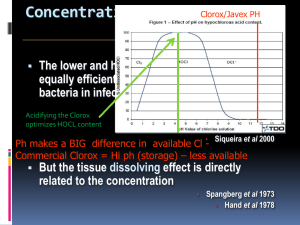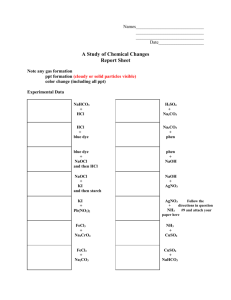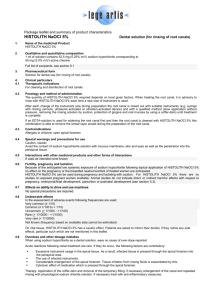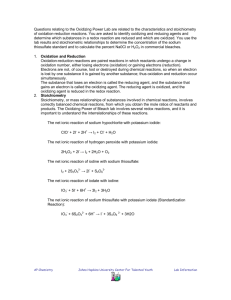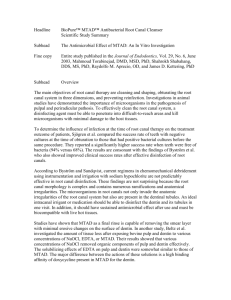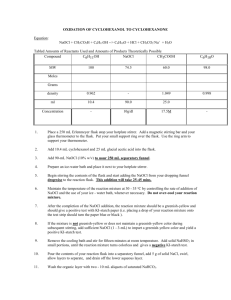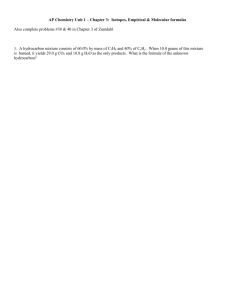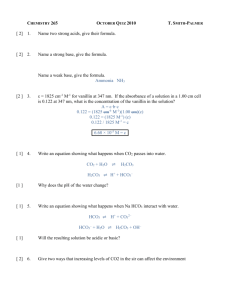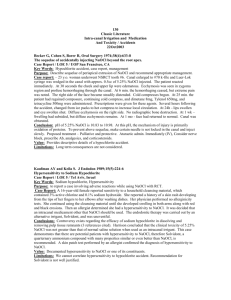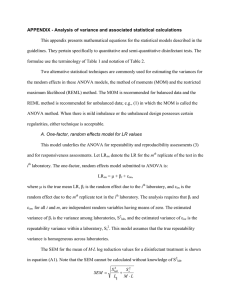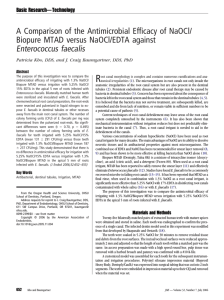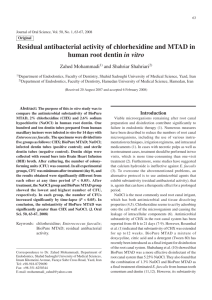Chemistry 106, Laboratory Test Study Sheet
advertisement
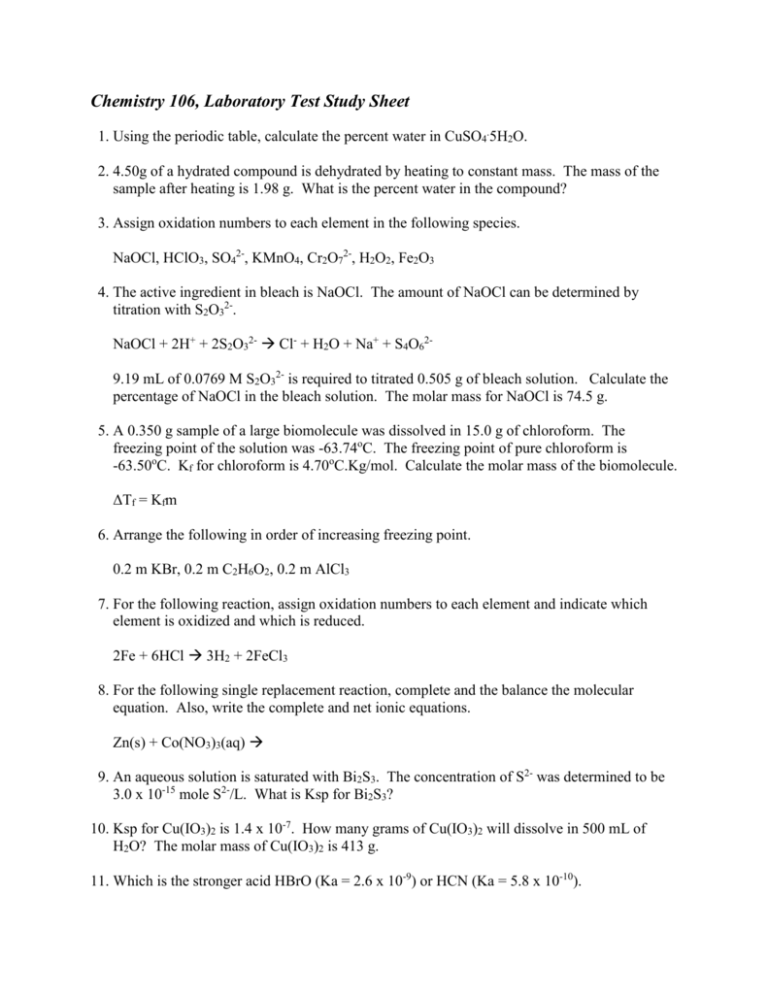
Chemistry 106, Laboratory Test Study Sheet 1. Using the periodic table, calculate the percent water in CuSO4.5H2O. 2. 4.50g of a hydrated compound is dehydrated by heating to constant mass. The mass of the sample after heating is 1.98 g. What is the percent water in the compound? 3. Assign oxidation numbers to each element in the following species. NaOCl, HClO3, SO42-, KMnO4, Cr2O72-, H2O2, Fe2O3 4. The active ingredient in bleach is NaOCl. The amount of NaOCl can be determined by titration with S2O32-. NaOCl + 2H+ + 2S2O32- Cl- + H2O + Na+ + S4O629.19 mL of 0.0769 M S2O32- is required to titrated 0.505 g of bleach solution. Calculate the percentage of NaOCl in the bleach solution. The molar mass for NaOCl is 74.5 g. 5. A 0.350 g sample of a large biomolecule was dissolved in 15.0 g of chloroform. The freezing point of the solution was -63.74oC. The freezing point of pure chloroform is -63.50oC. Kf for chloroform is 4.70oC.Kg/mol. Calculate the molar mass of the biomolecule. ΔTf = Kfm 6. Arrange the following in order of increasing freezing point. 0.2 m KBr, 0.2 m C2H6O2, 0.2 m AlCl3 7. For the following reaction, assign oxidation numbers to each element and indicate which element is oxidized and which is reduced. 2Fe + 6HCl 3H2 + 2FeCl3 8. For the following single replacement reaction, complete and the balance the molecular equation. Also, write the complete and net ionic equations. Zn(s) + Co(NO3)3(aq) 9. An aqueous solution is saturated with Bi2S3. The concentration of S2- was determined to be 3.0 x 10-15 mole S2-/L. What is Ksp for Bi2S3? 10. Ksp for Cu(IO3)2 is 1.4 x 10-7. How many grams of Cu(IO3)2 will dissolve in 500 mL of H2O? The molar mass of Cu(IO3)2 is 413 g. 11. Which is the stronger acid HBrO (Ka = 2.6 x 10-9) or HCN (Ka = 5.8 x 10-10). 12. Determine whether solutions of the following salts will be acidic, basic, or neutral. For those that produce an acidic or basic solution, write the equation representing the reaction with water. SrBr2, FeSO4, KNO2 13. A 0.1 M solution of HBrO has a pH of 4.79. What is Ka? 14. A 0.1 M solution of NaF has a pH of 8.07. What is Kb? Answers 1. 36% 2. 56% 3. NaOCl, Na+1, O2-, Cl+1 HClO3, H+1, Cl+5, O2SO42-, S6+, O2KMnO4, K1+, Mn7+, O2Cr2O72-, Cr6+, O2H2O2, H1+, O1Fe2O3, Fe3+, O24. 5.21% 5. 4.6 x 102 g/mol 6. AlCl3 < KBr < C2H6O2 7. 0 +1-1 0 +3 -1 2Fe + 6HCl 3H2 + 2FeCl3 Fe is oxidized, H is reduced. 8. 3Zn(s) + 2Co(NO3)3(aq) 3Zn(NO3)2 + 2Co 3Zn(s) + 2Co3+ + 6NO3- 3Zn2+ + 6NO3- + 2Co(s) 3Zn(s) + 2Co3+ 3Zn2+ + 2Co(s) 9. Ksp = 1.1 x 10-73 10. 0.68 g 11. HBrO since it has the large Ka. 12. SrBr2 neutral FeSO4 acidic, Fe2+ + 4H2O [Fe(H2O)3OH]+ + H+ KNO2 basic, NO2- + H2O HNO2 + OH13. 2.63 x 10-9 14. 1.38 x 10-11
